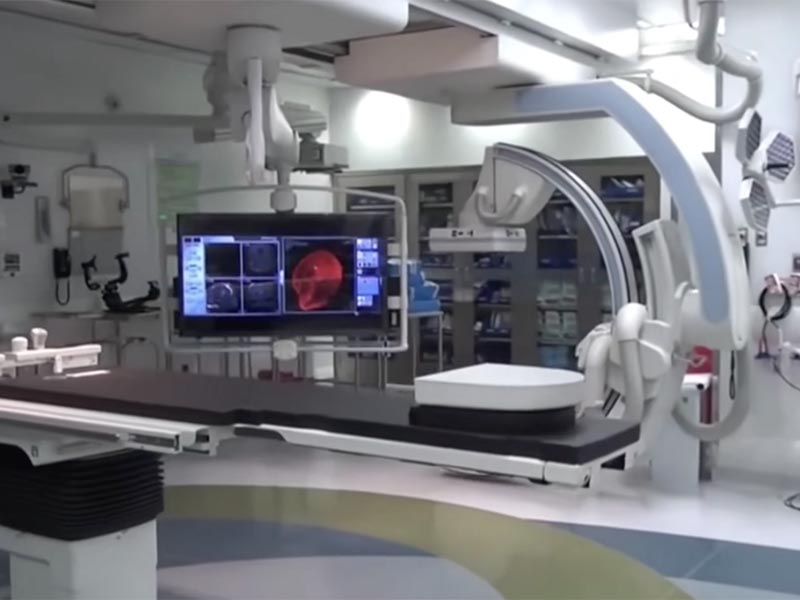Android SBC in Medical Devices: Powering the Next Generation of Intelligent Healthcare Equipment
Android Single Board Computers (SBCs) combine powerful hardware and flexible software to create next-generation medical devices. Learn how Android SBCs enhance usability, enable AI analysis, and ensure long-term reliability in healthcare applications.

In this architecture:
- The Android application handles the user interface, data input, and system configuration.
- The BSP (Board Support Package) manages kernel drivers and hardware-level communication.
- Data can be uploaded to hospital cloud systems for remote analysis or centralized record keeping.
Typical Medical Device Applications Using Android SBCs
1. Patient Monitoring Systems
In hospitals, Android SBCs are increasingly used in multi-parameter monitors that track heart rate, blood oxygen, and body temperature.
Benefits include:
- Large, touch-friendly UI with waveform display
- Local data logging and alarm triggers
- Integration with cloud or nurse call systems
- OTA firmware updates without service interruption
These devices often use 7" to 10" IPS panels with capacitive touch, driven by RK3566-based boards that balance performance with stability.
2. Diagnostic Imaging Terminals
Android’s multimedia framework makes it an ideal platform for ultrasound, X-ray viewer, or endoscopic displays.
The GPU-accelerated rendering ensures high frame rates for imaging visualization.
Key advantages:
- Smooth image playback using hardware codecs
- Real-time processing via GPU or NPU
- Support for DICOM or custom image formats
- Touch-based annotation and report generation
The Android SBC acts as both the compute and display unit — reducing system complexity compared to dual-board designs.
3. Portable Medical Devices
In field or mobile healthcare, power efficiency and compactness are essential.
Android SBCs such as PX30 or A133 provide low-power solutions for:
- Handheld diagnostic tools
- Point-of-care testing (POCT) devices
- Wearable monitors and smart diagnostic pads
These devices benefit from Android’s familiar interface, enabling non-technical users or medical staff to interact easily.
4. AI-Assisted Analysis and Edge Computing
Modern SoCs like RK3566N or RK3588 feature built-in Neural Processing Units (NPUs) for running machine learning models locally.
In medical applications, this enables:
- On-device AI image classification (e.g., tumor detection)
- Voice recognition for hands-free operation
- Predictive analysis for patient monitoring trends
Edge AI reduces latency, increases privacy, and minimizes cloud dependence — critical in regulated medical environments.
Compliance, Safety, and Regulatory Considerations
Medical equipment development demands adherence to strict standards such as:
- IEC 60601-1 (Safety for Medical Electrical Equipment)
- ISO 13485 (Quality Management Systems)
- EN 62304 (Software Life Cycle Processes)
- GDPR / HIPAA (Patient Data Protection)
While Android itself isn’t certified for medical use, integrating it on validated SBC platforms simplifies compliance:
- The hardware layer (power design, EMC, isolation) meets IEC standards.
- The software layer can be validated per FDA/CE documentation requirements.
- The system-level risk assessment ensures traceability and controlled updates.
Manufacturers can also lock system images and disable unnecessary Android features to comply with safety standards.
BSP Customization and Performance Optimization
Customizing the Android BSP is critical for medical reliability.
Engineering teams typically adjust:
- Kernel timing and scheduler policies
- Memory allocation for UI rendering
- Display calibration and gamma correction
- Driver integration for medical-grade sensors
Optimizations help achieve:
- Boot times under 8–10 seconds
- Stable 24/7 uptime
- Consistent thermal performance
- Secure OTA update delivery
By minimizing background Android services and using a dedicated launcher, the system behaves like a medical appliance rather than a consumer device.
Data Security and Privacy
In healthcare, data integrity and security are non-negotiable.
Android SBCs provide several mechanisms to ensure compliance:
- Encrypted storage (dm-crypt, file-based encryption)
- Verified Boot & Secure Boot (TrustZone)
- User-level permission management (SELinux)
- Hardware-backed KeyStore for credentials
- Signed OTA updates to prevent tampering
With these protections, medical devices can safely handle sensitive patient data without exposing vulnerabilities.
Example: Android-Based Infusion Pump Controller
A real-world project developed on an RK3566 Android SBC demonstrates the platform’s flexibility:
- Display: 5" IPS touch panel (720×1280)
- Interfaces: UART for motor control, I²C for sensors, USB for calibration
- Software: Custom Android service controlling dose precision
- Features: Multi-language UI, cloud monitoring, data logging
The Android OS enables medical staff to interact intuitively with dosage parameters while ensuring accurate, logged delivery controlled by the SBC’s real-time threads.
Future Trends: Android in Connected Healthcare
The integration of Android SBCs in medical devices is expected to accelerate as hospitals and clinics adopt IoT-driven, patient-centered systems.
Emerging directions include:
- AI-driven diagnosis integrated with cloud platforms
- Edge computing for local data analysis
- Telemedicine terminals for remote consultations
- Interoperable standards like HL7, FHIR, and DICOM over IP
- Voice and gesture control for sterile environments
With 5G connectivity and low-power SoCs, Android SBCs will play a vital role in next-generation point-of-care and home healthcare solutions.
Conclusion
The convergence of Android software, SBC hardware, and AI technologies is redefining what’s possible in medical device engineering.
Android SBCs enable manufacturers to create smarter, safer, and more user-friendly medical instruments — from bedside displays to diagnostic systems.
By offering an open development environment, intuitive UX tools, and long-term BSP stability, Android SBCs reduce time-to-market while meeting stringent medical standards.
For medical innovators aiming to balance functionality, cost, and compliance, the Android SBC is not just an embedded platform — it’s the foundation of intelligent healthcare design.